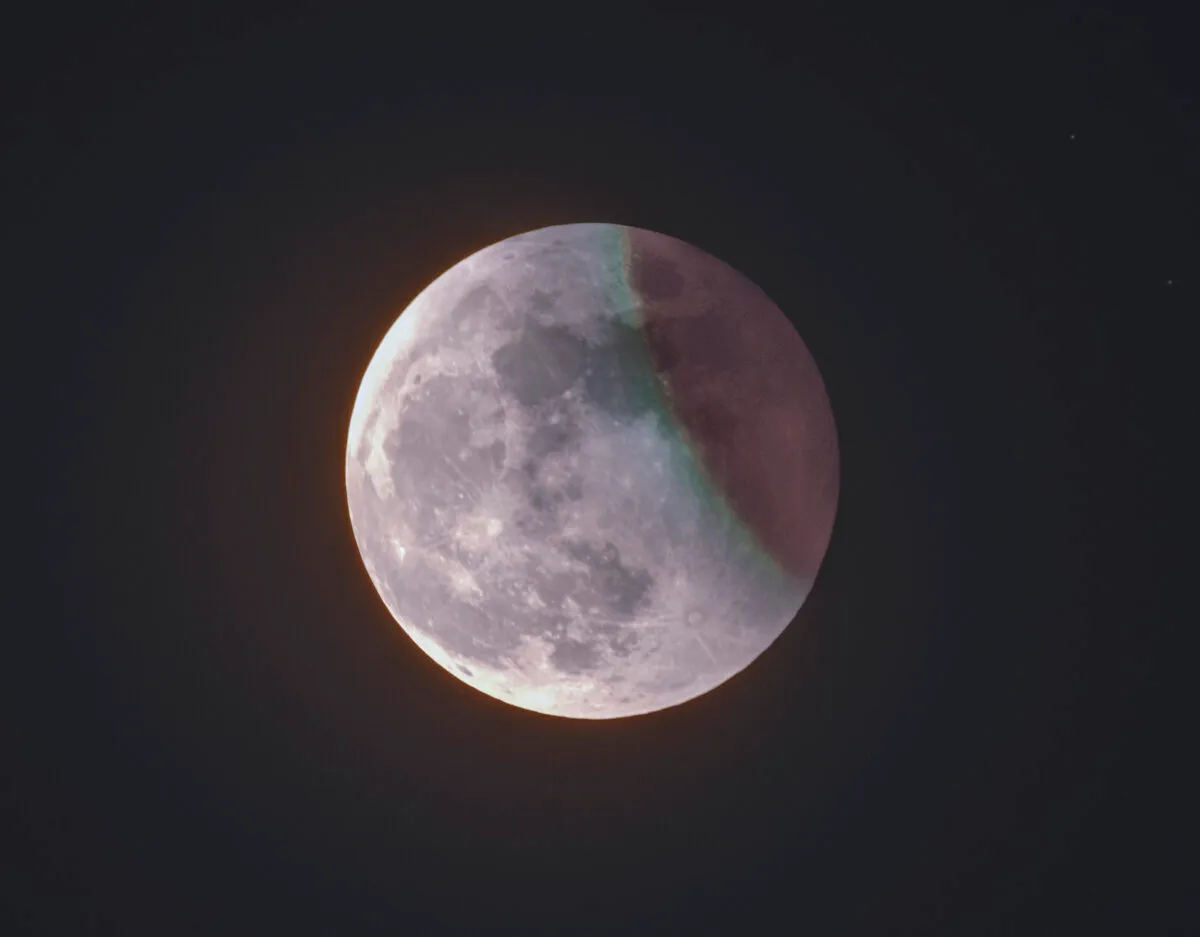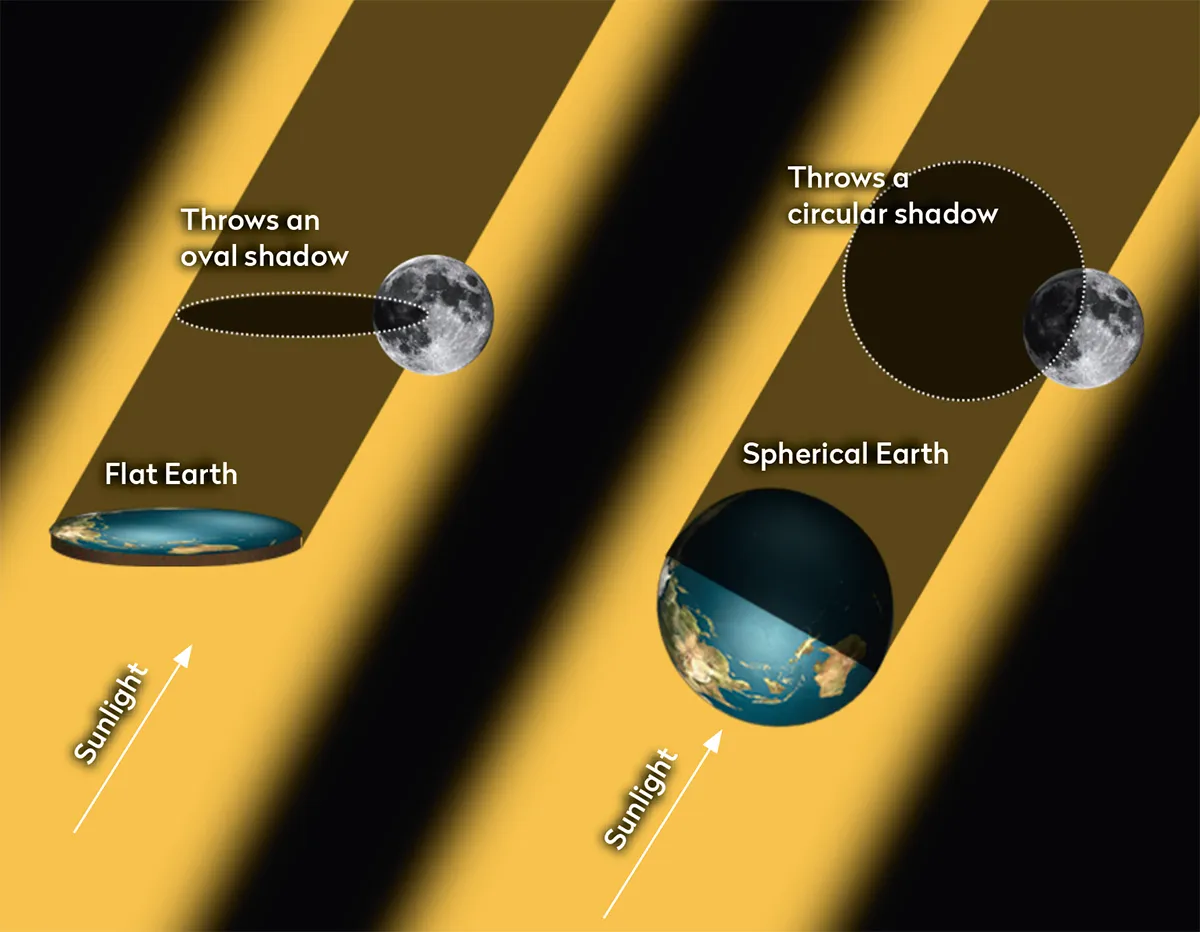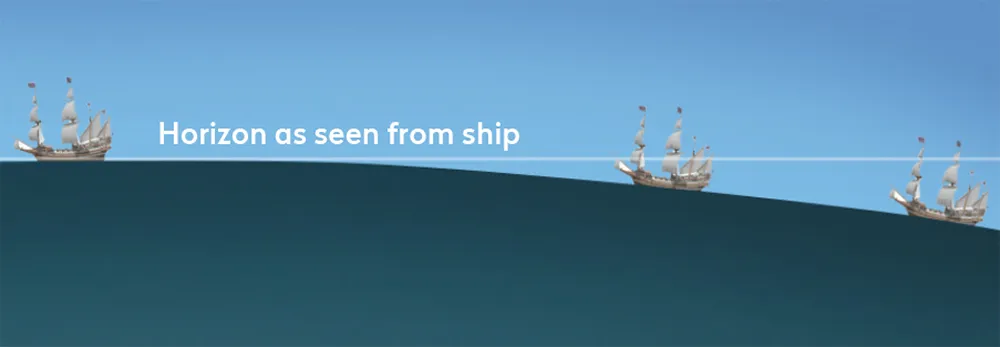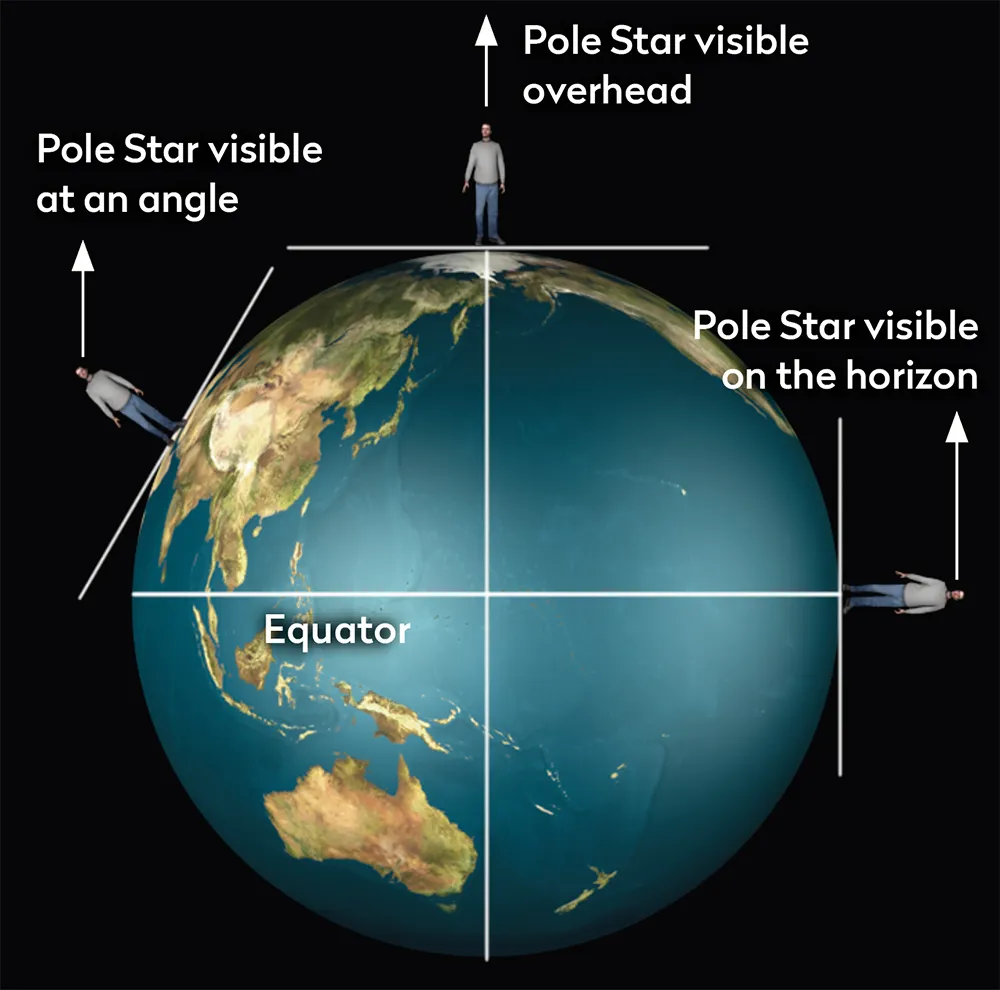It’s a common line to hear: "500 years ago, they thought that Earth was flat!" But it’s also completely untrue.
Astronomers have been able to prove our planet is a globe for well over 2,000 years, using methods you can recreate at home.
The first known reference to a round Earth is in ancient Indian religious texts.

The Rigveda, first composed between 1500 and 1000 BCE, includes the verse 'In the midst of the Universe, the spherical Earth stays'.
Unfortunately, though there is much evidence of ancient India’s extremely advanced knowledge of astronomy, there is little surviving record of their methods.
For that, we must turn to the Greek ‘natural philosophers’.
Observe Earth's shadow during a lunar eclipse

The first written evidence that Earth was a globe comes from Empedocles and Anaxagoras in around 430 BCE, both of whom noticed Earth’s shadow appeared rounded during a lunar eclipse.
You can look out for its curve yourself during the next eclipse.
Observe ships on the horizon

In 350 BCE, Aristotle added even more evidence.
He noted that when a ship sailed beyond the horizon, the masts would remain visible after the hull had disappeared, as you would expect if it had sailed around a curved edge, rather than across a flat Earth.
If you’re near a port you can do the same with modern ships, though you’ll need to look for their upper decks, rather than sails.
Note the North Star's changing position

At the time, it was well known that different constellations appeared in different places – for example, the North Star is closer to the horizon in Cairo than it is in Athens.
However, Aristotle was the first to suggest that because Egypt is further south, it would be looking at the star from a shallower angle if the world was a globe.
Next time you take a holiday within the Northern Hemisphere, keep an eye out for the North Star and see how its position compares to back home.
Measure the length of shadows

The Greeks also noted the same effect caused the lengths of shadows to differ, depending on how far north or south you were.
Several scientists used this to measure the circumference of Earth, but the earliest recorded account is by Eratosthenes in around 240 BCE.
He had heard from travellers that there was a well in the town of Syene, the modern-day town of Aswan in southern Egypt, where at noon on a certain day of the year, the Sun would perfectly illuminate the water but not the well walls, showing the Sun was directly overhead.
Later, he worked at the Library of Alexandria in Egypt, located hundreds of kilometres to the north.
On the same day of the year, he erected a pole and used the length of the shadow to measure the angle of the Sun as 7.2°, around 1/50th of a complete circle.
This meant the distance between the two cities was 1/50th of Earth’s circumference.
Fortunately, the distance had already been well measured, so he knew they were 5,000 stadia apart.
The exact length of a stadia varied in the ancient world, but this puts Erastothenes’s measurement between 38,000 and 46,000km – not far from the current measured circumference around the poles of 40,008km.
Circumnavigate the globe

Over the following centuries, knowledge of a globe-shaped Earth spread through the astronomers of Europe, India and the Arab world.
However, the first direct proof that Earth was not flat but a spherical globe was in 1519, when the Magellan–Elanco expedition first circumnavigated the globe.
Though unless you are both extremely wealthy and an expert sailor, you might have trouble replicating that one at home.
Find out more in our article on the expedition to discover the true shape of the Earth.
This guide originally appeared in the May 2023 issue of BBC Sky at Night Magazine.
